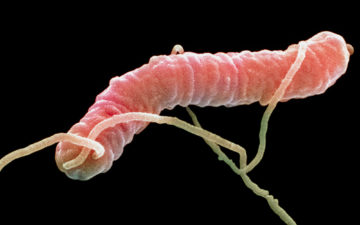Ed Yong in Aeon:
 In the 1870s, German physician Robert Koch was trying to curtail an epidemic of anthrax that was sweeping local farm animals. Other scientists had seen a bacterium, Bacillus anthracis, in the victims’ tissues. Koch injected this microbe into a mouse – which died. He recovered it from the dead rodent and injected it into another one – which also died. Doggedly, he repeated this grim process for over 20 generations and the same thing happened every time. Koch had unequivocally shown that Bacillus anthracis caused anthrax.
In the 1870s, German physician Robert Koch was trying to curtail an epidemic of anthrax that was sweeping local farm animals. Other scientists had seen a bacterium, Bacillus anthracis, in the victims’ tissues. Koch injected this microbe into a mouse – which died. He recovered it from the dead rodent and injected it into another one – which also died. Doggedly, he repeated this grim process for over 20 generations and the same thing happened every time. Koch had unequivocally shown that Bacillus anthracis caused anthrax.
This experiment, and those of contemporaries like Louis Pasteur, confirmed that many diseases are caused by microscopic organisms. Microbes, which had been largely neglected for a couple of centuries, were quickly cast as avatars of death. They were germs, pathogens, bringers of pestilence. Within two decades of Koch’s work on anthrax, he and many others had discovered that bacteria were also associated with leprosy, gonorrhoea, typhoid, tuberculosis, cholera, diphtheria, tetanus, and plague. Microbes became synonymous with squalor and sickness. They became foes for us to annihilate and repel.
Today, we know this view is wrong – as I explain in my new book I Contain Multitudes.
More here.
